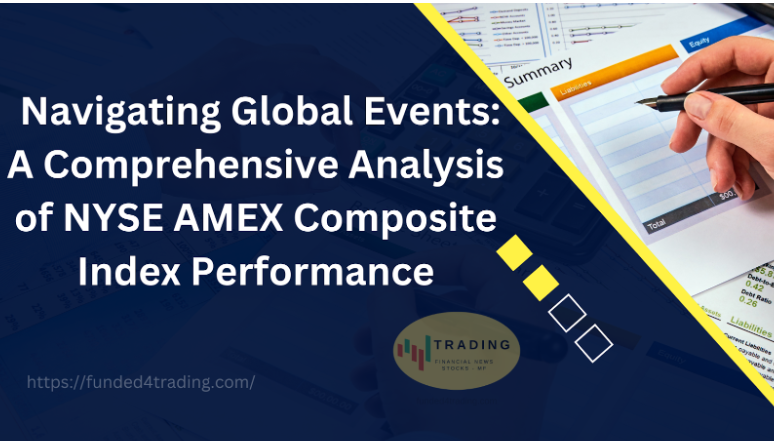Introduction:
In the ever-evolving landscape of global financial markets, staying abreast of key events and their impact on indices is crucial for investors and financial enthusiasts alike. One such index that plays a pivotal role in reflecting market trends is the NYSE AMEX Composite Index. In this blog, we delve into the dynamic interplay between global events and the performance of the NYSE AMEX Composite Index, offering insights that can prove invaluable for investors seeking a deeper understanding of market dynamics.
Global Events and Market Dynamics:
The interconnectedness of global economies has made financial markets highly sensitive to geopolitical and macroeconomic events. From political developments to economic indicators, a myriad of factors can influence investor sentiment and subsequently impact market indices. Understanding these relationships is paramount for investors looking to make informed decisions.
Political Developments:
Political events, both domestic and international, have the power to send shockwaves through financial markets. Elections, policy changes, and diplomatic tensions can introduce uncertainty, leading to fluctuations in stock prices. The NYSE AMEX Composite Index, with its diverse components, serves as a barometer for how investors collectively respond to geopolitical shifts.
For instance, during times of heightened political tension, such as trade disputes or geopolitical conflicts, investors may flock to safe-haven assets, affecting the composition and performance of the index. Analyzing historical data can provide valuable insights into how the index has responded to specific political events, helping investors anticipate potential market movements.
Economic Indicators:
Economic indicators, ranging from GDP growth to employment rates, play a crucial role in shaping investor expectations. Positive economic data can boost confidence, driving up stock prices, while negative indicators may lead to market corrections. The NYSE AMEX Composite Index, reflecting a broad spectrum of industries, provides a comprehensive snapshot of how the market responds to changes in economic conditions.
Investors often monitor economic releases such as manufacturing data, consumer sentiment indices, and inflation rates to gauge the health of the economy. By correlating these indicators with the historical performance of the NYSE AMEX Composite Index, investors can gain insights into potential trends and anticipate market movements.
Market Sentiment and Investor Behavior:
Beyond the quantitative aspects, understanding market sentiment and investor behavior is crucial for interpreting index movements. Psychological factors, such as fear and greed, can drive market trends. The NYSE AMEX Composite Index, being a composite of stocks listed on the NYSE and AMEX, reflects the collective sentiment of a diverse investor base.
During periods of market volatility, investors may shift their portfolios, affecting the composition of the index. Analyzing trading volumes, trends in short-selling, and investor sentiment indicators can provide valuable clues about the prevailing market sentiment. This nuanced understanding allows investors to make informed decisions based on the prevailing mood in the market.
NYSE AMEX Composite Index Performance in Recent Global Events
To illustrate the practical application of our analysis, let’s examine the performance of the NYSE AMEX Composite Index in the context of recent global events.
1. COVID-19 Pandemic: The onset of the COVID-19 pandemic in 2020 led to widespread market turmoil. The NYSE AMEX Composite Index experienced a sharp decline as economic uncertainties loomed. However, the subsequent recovery showcased the index’s resilience as governments and central banks implemented measures to stabilize economies.
2. US-China Trade tensions: Trade tensions between the United States and China in recent years have contributed to market volatility. The NYSE AMEX Composite Index, reflecting the impact on companies involved in international trade, exhibited sensitivity to developments in the trade negotiations.
Conclusion:
In conclusion, understanding the intricate relationship between global events and the performance of the NYSE AMEX Composite Index is essential for investors seeking to navigate the complexities of financial markets. By analyzing historical data, monitoring economic indicators, and interpreting market sentiment, investors can make informed decisions to capitalize on opportunities and mitigate risks.
As we continue to witness the ever-changing landscape of global events, the NYSE AMEX Composite Index remains a valuable barometer, reflecting the collective response of investors to the dynamic forces shaping our interconnected world. Stay tuned for further insights into the evolving dynamics of financial markets and the performance of key indices.

